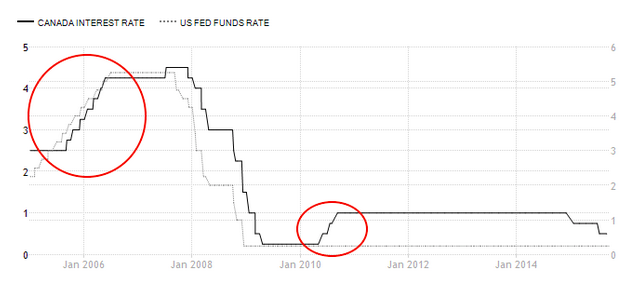
Why Should You Care About Interest Rate Changes?
Let’s dig into the steak.
If you hold normal government or municipal bonds with a fixed maturity and yield, you should be okay (municipal bonds default on very rare occasions). In this case, you are likely to get your interest on time and principal back when the bond matures. However, the story changes if you bought riskier bonds from corporations (especially if interest rate hikes start to affect their bottom lines). Also, if you don’t intend to hold the bonds all the way to their maturity (i.e. you intend to sell them), then you are exposed to principal risk. If it sounds strange, you are not alone to think so.
If you hold bond funds, the story becomes even more complicated. Technically speaking, bonds and bond funds are separate asset classes all together. On the one hand, you hold the bonds and the contract is between you and the borrower. On the other hand, you and other investors pool in money and give it to an expert to manage. The expert then goes shopping on your behalf and buys you shares in a diversified portfolio of bonds with varied interest rates and maturities.
The Math Behind the Risk
Let’s say you bought a $1,000 bond at par (paying its full face value, to keep things simple) at a 3% coupon (giving you an income of $30 per year). And while you hold the bond, the interest rate rises to 4%. Newly issued bonds with similar ratings will now start giving a coupon of 4%. Investors are therefore less likely to buy your bond for the same price because they are getting a higher coupon elsewhere. So your $1,000 bond will be worth less should you decide to sell it.
How much less? Let’s do some rough math.
The new buyer will expect a 4% interest rate as per the going market rate. Now, since your bond will only pay a $30 coupon, the loss is covered up by buying the $1,000 bond for $750 ($30 interest on a $750 principal gives the buyer a 4% return). If, however, you hold the bond till maturity, you will get the full $1,000 face value back, barring any defaults. Another approximate method to ascertain the interest rate impact on the value of your bonds is to multiply the duration by the interest rate increase. So if your $1,000 bond had a duration of 20 years, a 1% increase by the Central Bank would chop down the value by approximately 20%. If the rate increase is 2%, it will reduce the value by 40% and so on.
Let’s take the same scenario for a mutual fund holding bonds. When interest rates rise, the market value of bonds decreases (as described above) and that means the net asset value (NAV) of the fund decreases. So the units you bought will be worth less. There is no concept of “holding to maturity” in this case because the fund manager will keep changing their portfolio of bonds, and that will keep changing the duration/yields. In addition, the NAV is a changing number and it could recover in the future (just like stocks). Any losses or gains you have in the short term might change in the long run.
The Bottom Line
It is important to remember that a 15-20 year period is a long time and that losses/gains are only notional unless you try to sell or close your investment (also known as “realizing” your gains/losses). To protect yourself, diversification is the name of the game. That advice has never changed, irrespective of what your investment objectives are. If you hold a good mix of individual bonds (some with short-term maturities or floating-rate bonds) and carefully invest in a mix of bond funds that match your risk appetite, you are better placed to sail through the interest rate head winds.

